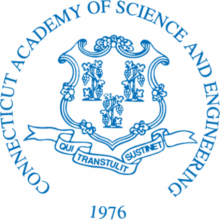In 1967, a Yale student wrote a wistful melody celebrating love’s tender memories. This song, Time After Time, became the second most frequently performed song by the renowned à cappella group, the Yale Whiffenpoofs. The student composer and Whiffenpoof musical director, Robert "Pitchpipe" Birge (Yale ’68), continued to compose — and went on to complete a few other noteworthy accomplishments as well, including creating a protein-based disk drive in1982, pioneering the use of spectroscopic and theoretical methods to study biological molecules, and most recently, working to develop an artificial retina that will bring functional sight to those who would otherwise be blind. Robert R. Birge is the Harold S. Schwenk Sr. Distinguished Chair of Chemistry, College of Liberal Arts and Sciences at the University of Connecticut and the 2009 recipient of the Connecticut Medal of Science.
Bob grew up on Long Island. His mother was a musician and his father a teacher who, while encouraging his interest in music and science, “didn’t push him in any way.” When he was 12, he wrote his own music, enjoying improvising and creating rather than traditional practice routines. He enrolled at Yale as a chemistry and music major. During a sophomore year music competition, his concerto was well received but did not earn top placement. He recalls that his professor did him “an enormous favor by pushing him towards the sciences.” After graduating with a B.S. in chemistry, Bob began graduate work at Wesleyan University. Studying chemical physics, he worked under the mentorship of Peter Leermakers on “high resolution molecular spectroscopy of retinals” to better understand how “light drives the isomerization of the retinal chromophore,” and creates a change in the geometry of protein molecules responsible for vision. Dr. Birge says he was always interested in understanding how systems operate at the molecular level and then moving to investigate the larger system functions, whereas many other scientists work in the opposite direction — analyzing the function of a system in order to understand the underlying mechanisms.
His research on protein molecules and their response to light led him to work with a 3.5 billion-year-old archaeal protein called bacteriorhodopsin, found worldwide in salt marshes. This simple protein is among the earliest life forms converting sunlight into energy and is similar to the visual protein rhodopsin. Researching bacteriorhodopsin provides insight into understanding how rhodopsin activates the nerve impulses essential for vision, paving the way for the development of an artificial retina.
Dr. Birge believes that his greatest contribution is the development of the artificial retina, now five to ten years from completion. His next most valuable contribution, he says, was as musical director of the Whiffenpoofs — and Time After Time. He suggests that young people “follow their dreams and find something to do that genuinely interests them” because if “you love something you will find your niche” and that passion will pull you through difficult times. Dr. Birge advises young people to “stay open to new opportunities and not always listen to your parents,” but do find ways to make meaningful contributions. Dr. Birge certainly has learned from his own experience; his vast contributions include over 225 refereed articles. He served on the Connecticut Academy of Science and Engineering Committee on Energy Alternatives and Conservation in 2007, established a new center for Nanobionics at the University of Connecticut, was elected to the Connecticut Academy of Science and Engineering and the Connecticut Academy of Arts and Sciences in 2005, earned the 3M Award of Canada in Physical Chemistry and the Connecticut Innovations 2001 Annual Technology Award. Dr. Birge gives of himself tirelessly in his role as teacher and colleague, providing the University of Connecticut with an outstanding program that attracts top students and faculty to the state.


